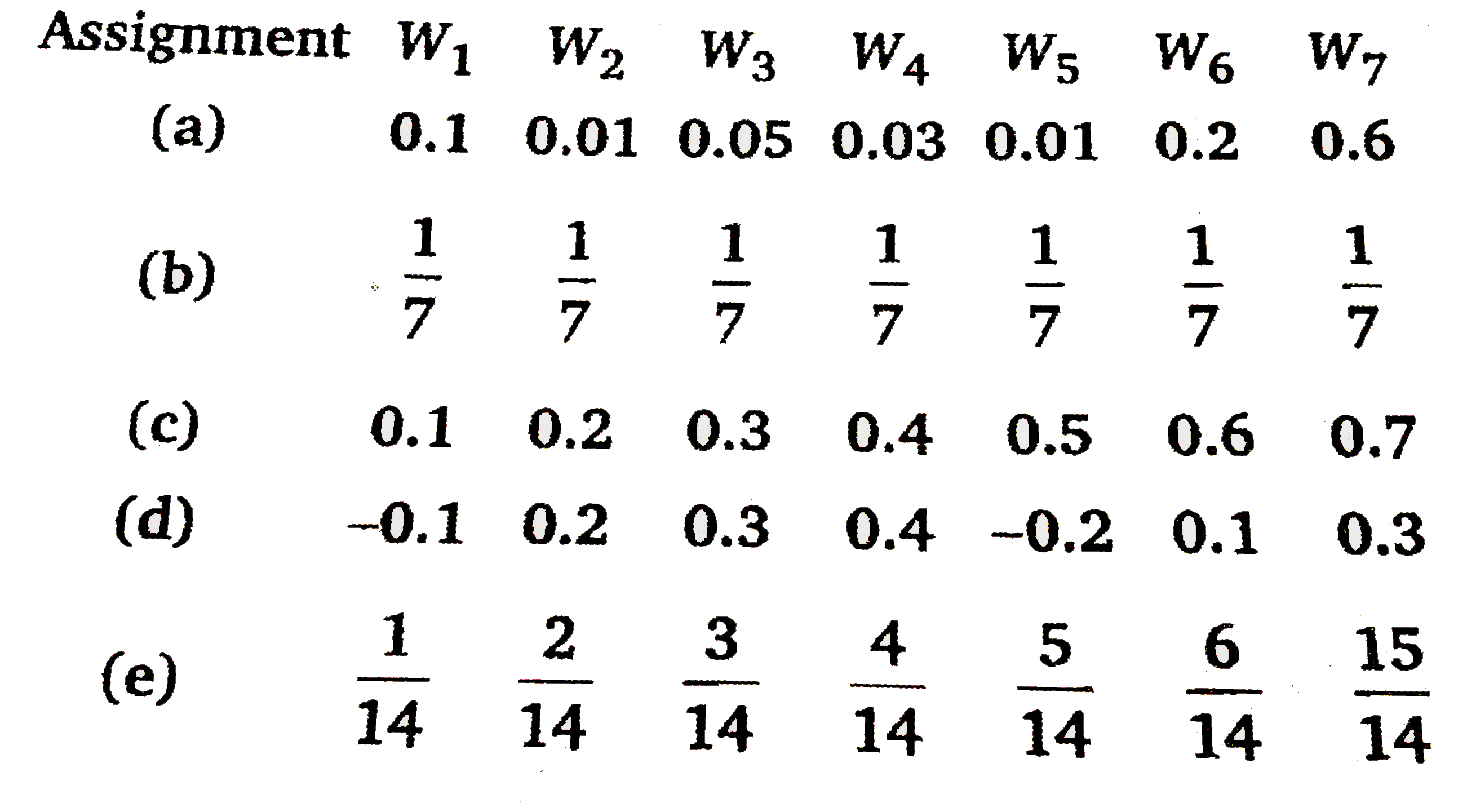A coin is tossed three times, consider the following events. A : No head appears, B: Exactly one head appears and C: Atleast two appear. Do they form a set of mutually exclusive and exhaustive events?Solution in Bengali
The sample space of the experiment is
S={HHH,HHT,HTH,THH,HTT,THT,TTH,TTT}
A={TTT}
B={HTT,THT,TTH}
C={HHT,HTH,THH,HHH}
Now, A∪B∪C={TTT,HTT,THT,TTH,HHT,HTH,THH,HHH}=S
Therefore, A, B and C are exhaustive events.
Also, A∩B=ϕ,A∩C=ϕandB∩C=ϕ
Therefore, A, B and C form a set of mutually exclusive and exhaustive events.
Topper's Solved these Questions
- BOOK - CENGAGE PUBLICATIONCHAPTER - PROBABILITY I EXERCISE - Solved Example9videos
PROBABILITY I
- BOOK - CENGAGE PUBLICATIONCHAPTER - PROBABILITY I EXERCISE - Exercise 9.16videos
PROBABILITY I
- BOOK - CENGAGE PUBLICATIONCHAPTER - PROBABILITYEXERCISE - All Questions470videos
PROBABILITY
- BOOK - CENGAGE PUBLICATIONCHAPTER - PROBABILITY IIEXERCISE - MULTIPLE CORRECT ANSWER TYPE6videos
PROBABILITY II
Similar Questions
When a fair dice is rolled, the number that comes up top is a number between one to six. Assuming we roll the dice once, to check the possibility of three coming up.
03:20View SolutionWhich of the following cannot be valid assignment of probabilities for outcomes of sample space S={W1,W2,W3,W4,W5,W6,W7}
 03:06View Solution
03:06View SolutionA coin is tossed three times, consider the following events. A : ‘No head appears’, B: ‘Exactly one head appears’ and C: ‘Atleast two appear’. Do they form a set of mutually exclusive and exhaustive events?
04:46View SolutionLet EandF be two independent events. The probability that exactly one of them occurs is 1125 and the probability if none of them occurring is 225. If P(T) denotes the probability of occurrence of the event T, then (a) P(E)=45,P(F)=35 (b) P(E)=15,P(F)=25 (c) P(E)=25,P(F)=15 (d) P(E)=35,P(F)=45
05:12View SolutionA coin is tossed three times, consider the following events.
A : No head appears,
B: Exactly one head appears’ and
C: Atleast two appear
Do they form a set of mutually exclusive and exhaustive events?04:36View SolutionA coin is tossed three times. Event A: two heads appear Event B: last should be head Then identify whether events AandB are independent or dependent.
04:12View SolutionA coin is tossed three times.
Event A: two heads appear
Event B: last should be head
Then identify whether events A and B are independent or not.02:44View Solutionएक सिक्के को तीन बार प्रक्षिप्त किया जाता है। निम्न घटनाओं को निरूपित करने वाले समुच्चय अंकित कीजिए तथा
(i) केवल पट् प्रकट होता है,
(ii) कम-से-कम दो चित्त प्रकट होते हैं,
(iii) एक चित्त प्रकट होता है।
क्या यह परस्पर अपवर्जी और निःशेष घटनाओं का समुच्चय है ?06:46View SolutionIf three coins are tossed simultaneously, then find the probability of the following events :
(i) Event A : No head appears
(ii) Event B : Head appears at least twice
(iii) Event C: Head appears twice.02:12View Solutionएक सिक्के को तीन बार उछाला गया है। निम्नलिखित घटनाओं पर विचार कीजिए।
A: कोई चित्त प्रकट नहीं होता है।
B: तथ्यतः एक चित्त प्रकट होता है और
C: कम से कम दो चित्त प्रकट होते हैं।
क्या यह परस्पर अपवर्जी और नि:शेष घटनाओं का समुच्चय है?02:00View SolutionA coin is tossed three times. Given that at least one head appears, what is the probability that exactly two heads will appear?
05:41View SolutionA coin is toosed three times consider the following events. A:'No head appears', B: 'Exactly one head appears' and C: 'Atleast two heads appear'.
04:46View SolutionA coin is toosed three times consider the following events. A:'No head appears', B: 'Exactly one head appears' and C: 'Atleast two heads appear'.
03:18View SolutionA coin is toosed three times consider the following events. A:'No head appears', B: 'Exactly one head appears' and C: 'Atleast two heads appear'.
04:12View SolutionA coin is toosed three times consider the following events. A:'No head appears', B: 'Exactly one head appears' and C: 'Atleast two heads appear'.
06:08View SolutionA coin is tossed three times, consider the following events. A : ‘No head appears’, B: ‘Exactly one head appears’ and C: ‘Atleast two appear’. Do they form a set of mutually exclusive and exhaustive events?
08:25View Solution

